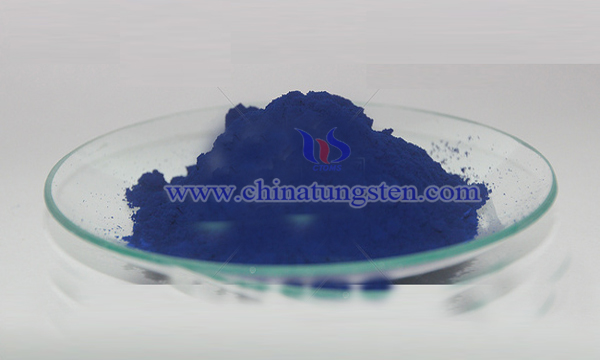An Enhanced Preparation Process of Cesium Tungstate
- Details
- Category: Tungsten Information
- Published on Friday, 02 August 2019 00:16
Infrared light, especially near-infrared, has a significant thermal effect, which tends to cause temperature rise, which causes an increase in temperature, such as indoors or in a car. The currently disclosed infrared barrier materials generally refer to a class of functional materials that have a strong absorption or reflection of infrared light without affecting the transmission of visible light.
Cesium tungstate (Cs2WO4) has near-infrared blocking properties, which can block near-infrared light with a wavelength greater than 900 nm. Therefore, it has excellent near-infrared blocking properties. However, the preparation of barium tungstate powder has the problems of complicated process and high cost, and the prepared powder has insufficient performance for near-infrared barrier properties.

In order to overcome the defects such as large particles, long reaction period and low efficiency in the preparation of yttria-stabilized tungsten oxide nanomaterials in the prior art, some scholars have further improved the preparation methods in the conventional process, and the specific operations thereof are as follows:
1)300 ml of ethanol and 3 ml of water were premixed to form a mixed solvent according to a volume ratio of 1:0.01, and then 3 ml of nitric acid was added as a hydrolysis inhibitor for the subsequent reaction; the compound of ruthenium and tungsten was subjected to a molar ratio of Cs:W=0.2:1. Ingredients, weigh 3.91g of cesium carbonate, 30.43g of ammonium tungstate, add to the previous mixture of alcoholic acid, stir by magnetic heating stirrer until all dissolved; then 16.83g of ethylenediaminetetraacetic acid and 17.31 g lauric acid and water pre-mixed, mix well, add ammonia water until the complexing agent is dissolved, then add to the above mixed solution, and continue to add ammonia water to adjust the pH to 7, continue to stir; after the mixture is stirred evenly into a sol Then, the mixture was heated and stirred at 60 ° C for 1 hour to a gel state, and then dried in a blast oven at 150 ° C for 3 hours to obtain a black sintered precursor; the sintered precursor was calcined in an air atmosphere at 650°C for 10 hours, and the temperature was raised. The rate is controlled to 2 ° C / min; then converted to a nitrogen atmosphere to cool, and then converted to a hydrogen argon mixture, calcined in a reducing atmosphere of 400°C for 10 hours, finally obtained yttria stabilized tungsten oxide nano powder Cs2WO4; using a nano-grinding technique to achieve a high dispersion and high stability on a microscopic scale of a mixed slurry of 50 g of yttria-stabilized tungsten oxide, 5 g of a propylene glycol block polyester dispersant, and 945 g of propylene glycol methyl ether acetate. And forming a 5% solid content yttria-stabilized tungsten oxide nanodispersion.
The use of two-component complexing agent, hydrolysis inhibitor and basic synthesis conditions can significantly improve the uniformity of reactant mixing, can significantly improve the particle agglomeration of nanomaterials, increase the uniformity of particle size, and shorten the process cycle. The final product palladium tungstate nanomaterial can be applied to the field of thermal insulation film such as building or window, and has good infrared blocking effect.
- Tungsten Oxide Manufacturer & Supplier, Chinatungsten Online: www.tungsten-oxide.com
- Tungsten News & Prices of China Tungsten Industry Association: www.ctia.com.cn
- Molybdenum News & Price: news.molybdenum.com.cn
- Tel.: 86 592 5129696; Fax: 86 592 5129797; Email: sales@chinatungsten.com



 sales@chinatungsten.com
sales@chinatungsten.com